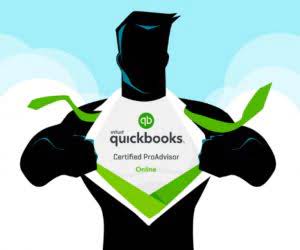2025 IPhone And Android Blocking Secrets: Who Sees What?
Launch the Messages app → select the conversation you want to block → tap the contact info from the top. As mentioned in the prompt accompanying the blocking process, you will not receive phone calls, messages, or FaceTime from blocked contacts. If all else fails and you still believe your phone is being tracked, a factory reset is the most effective way to ensure that any malicious software is completely removed. A factory reset will erase all data on your phone, including apps, settings, and personal files. Be sure to back up any important data before performing this action, as it cannot be undone.
Contact Apple Support
Simply launch the phone app (dialer) and head to the number which you want to block. The first one involves the situation when you get a call from someone. It could be on the list of your received calls or missed calls. It will all appear in a single list on your phone in the recent call section. The caller will think as if your iPhone is ringing (but you won’t be notified of it). You can utilize the DND feature as well – if you want almost no one to call you or text you on your iPhone.
- One of the most common signs that someone may have blocked your number is that your calls go directly to voicemail.
- Lifehacker has been a go-to source of tech help and life advice since 2005.
- And, if someone else blocked you, it is easy to figure it out when you try to call them or text them.
- These hidden processes can also cause spikes in data usage, which is another red flag.
- And, even if the caller hears a short ring, you won’t get anything on your iPhone – you won’t even know if they tried to call you – unless you check your recent calls for the missed calls.
Phone carriers are in the blocking game, too
This means Android users will remain in the dark, left to interpret unanswered calls or lack of message responses as potential signs of being blocked. By following these simple steps you will be among the safest iPhone users in the world. When used in combination with blocking at either your device or carrier level, you can ensure you’re less likely to be contacted by unwanted individuals. The second method is to request your carrier to block a number for you.
Interestingly, while the call goes to voicemail, the blocked caller can still leave a message. However, these messages won’t appear in your regular voicemail inbox. They’re segregated into a separate “Blocked Messages” folder, allowing you to review them at your discretion without cluttering your main voicemail.
Border searches of electronic devices, including cellphones, laptops and iPads, are meant to « enforce the law at the U.S. border and to protect border security, » according to the CBP website. Depending on what you blocked (SMS or Calls), you will stop seeing notifications from them. If they try to call you, they will just hear a ring and it will take them to the voice mail (if you have it setup). Or else, it will just tell them that you’re bust after a short ring.
Block an Incoming or Outgoing FaceTime Call
To block a number from the Phone/Dialer app, open it up and select the contact or person you want to stop. If you want to ensure that no one can reach out to you without your permission, your best bet is to turn on Do Not Disturb mode which mutes all incoming messages until it’s turned off. But if it weren’t for phone service companies, most of us would be stuck in a constant stream of calls and texts. You can also add a phone number or email address directly to your Blocked Contacts list in the Settings app. From the Phone app, tap Recents, then tap the Info button next to the phone number or contact that you want to block. When someone you’ve blocked tries to FaceTime you, their phone will simply ring and ring without an answer.
How to Block Temu on Computers and Mobile Phones
By blocking the site, you remove the temptation altogether. No more impulse shopping sprees, just smarter financial choices that match your actual priorities. Without Temu pulling you into endless scrolling, you can finally focus on what really matters—whether it’s work, studying, or just getting things done. For professionals and students alike, removing online temptations means fewer interruptions and a better workflow. For many, blocking Temu isn’t just about productivity—it’s about security. If you’re looking for an effective way on how to block Temu from coming up, BlockSite gives you full control over such distractions to help you stay productive and keep your data more secure.
If you don’t want to receive these messages, you need to block the contact. When someone you’ve blocked calls you, they’ll be sent right to your voicemail, as if your phone was turned off. If you suspect that you’ve been blocked by someone using an iPhone, check the clues listed above. If all of them check out, especially the last one, you have most likely been blocked. Apple allows you to block phone numbers, contacts, and email addresses on your device.
But then we start to wonder what happens when we block someone on iPhone. A tech news and gadget blog delivering daily updates on the industry, personal insights, what happens if you block someone on iphone leaks, rumors, and details on upcoming and unreleased devices. Ultimately, while the idea of revealing blocked status is intriguing, Apple seems committed to protecting user privacy, leaving the blocked party to speculate rather than confirm. As we briefly alluded to above, there are two common ways to block phone numbers. You simply block the number using the Contacts app on your iPhone.
There are a few simple signs that can help you determine if you’ve been blocked. If you ever find yourself in the position of needing to block someone’s phone number on your iPhone, it’s straightforward to do. You can either go through your Phone app or the Settings app, and each process only takes a few seconds. There are two methods for blocking a number on iPhone 15, and the one to use depends on whether a caller is in your Contacts app or not.
- There’s no perfect way to know if someone has blocked your number, but the signs mentioned above can give you a good idea.
- It’s estimated that 1 billion scam calls per month are blocked by phone service companies.
- However, for foreign nationals, even on approved visas, it’s iffier.
The platform is backed by Chinese tech giant PDD Holdings and has quickly climbed the most-downloaded apps list across major marketplaces. That’s 167 million people, scrolling, browsing, and buying—sometimes mindlessly. And with Temu’s aggressive data collection practices, many are now looking for ways to block it.
For most of us, blocking or ignoring spam is just a part of life in the 21st century. Hopefully, phone vetting technology will continue to advance so that more spam calls can be filtered out at the carrier level. So, when someone you’ve blocked texts you, they will not see any delivery status for their text and their message bubble will turn green. When a blocked number tries to send you a text message, it won’t go through.
If you are cleaning up your phone, make sure to hard delete anything so it’s not just in the deleted folder, which is still accessible on your device. While sending a message, you will observe on iMessage, you won’t find “Delivered” even if the message was successfully sent. And, even if the caller hears a short ring, you won’t get anything on your iPhone – you won’t even know if they tried to call you – unless you check your recent calls for the missed calls. Of course, it is not rocket science to explain what happens after blocking someone on iPhone.
CPA vs Tax Preparer: Which is Right for Your Business?
Such workers know current tax laws, organizational financial strategies as well as accounting rules and regulations. A CPA and a licensed tax preparer should deliver similar results when preparing taxes. What’s « better » comes down to your unique tax situation and business needs.
Can tax preparers represent me in an IRS audit?
The top tax preparer in Delaware will provide special care for your needs, be careful with details, and make sure to know the newest tax rules and laws. The differences between accountants and tax preparers can be seen in a few details. Additionally, an accountant has an average salary of $54,890, which is higher than the $51,020 average annual salary of a tax preparer. When comparing a CPA vs. tax preparer for your business, it’s best to start with your goals. Perhaps your taxes are straight forward, but you have questions about certain tax regulations. Or, perhaps your business is preparing to be audited or needs guidance in structuring investments to improve your tax position.
Comparing Tax Preparers and CPAs
This PTIN requirement applies to all tax preparers (including tax attorneys, CPAs, and enrolled agents). IRS-issued PTIN is valid for one year and has to be renewed annually. When your financial universe becomes more complex, a CPA’s expertise can save the day. If you’re a business owner, high-net-worth individual, or you have investments in various sectors, a CPA can provide valuable insights and strategic financial advice. Unlike CPAs, tax preparers don’t typically require a specific degree in accounting or finance.
IRS Representation
- It’s a delicate balancing act, as they strive to maximize their clients’ tax savings while staying within the boundaries of the law.
- We take tax prep off your plate by having all your financials organized through clean, monthly books.
- In addition to audits, CPAs also play a crucial role in tax planning and preparation.
- However, you must have an active IRS Preparer Tax Identification Number (PTIN) to be authorized to prepare tax returns.
- A compliance accountant knows state and federal tax laws, and they work with businesses to keep them compliant and avoid an audit.
- Not every individual is required to file a tax return, but most people who earn income must file taxes annually.
However, they don’t have the right to represent them for collection issues or appeals. On the other hand, CPAs undergo an extensive educational journey to become certified. Additionally, CPAs must pass the rigorous contribution margin CPA Exam, which tests their knowledge in various areas of accounting and business. They usually offer cheaper services, which makes them a common choice for people with simple tax needs. But, the cheaper price might mean they don’t have much knowledge about difficult tax issues. There are several specialties under the umbrella of accountants that may require their own special licenses.
- A CPA is a US state board issued accounting license attained after qualifying the Uniform CPA Exam and meeting its educational and experience requirements.
- When it comes down to it, tax preparers do not have any unique credentials.
- Additionally, an accountant has an average salary of $54,890, which is higher than the $51,020 average annual salary of a tax preparer.
- Aspiring CPAs must pass the CPA Exam, a formidable series of tests covering various accounting topics.
- They can serve as financial strategists, aiding you in everything from risk management to expanding your business.
- As they keep track and record the flow of money, they can offer guidance on how to reduce costs, enhance revenue, and help in profit maximization.
Where can I learn more about tax preparation services?
For professional help, contact Sudhir Tax which specializes in taxes and financial advice. Tax accountants usually ask for more money because they have a lot of training and offer many different services. Even though they cost more, the smart tax planning and financial tips they give can save you a lot of money over time. Companies and people with complicated finances often think it’s a good idea to pay for a tax accountant. Certified public accountants, or CPAs, are often used by businesses and individuals for preparing taxes.
CPAs have the skills and knowledge to handle tax planning, financial analysis, legal compliance, and even representation in case of an IRS audit. They can help you navigate the intricate world of business taxes and ensure maximum financial Retail Accounting efficiency. Furthermore, CPAs are often called upon to provide financial consulting services.
When to Choose a Tax Preparer
If you need financial planning or IRS representation, a CPA is a better investment. Business owners must often file tax estimates for their designated businesses in addition to filing their personal tax returns. Tax prepares are preferred by entities with uncomplicated tax matters. This is because they are not likely to be audited by the IRS and usually may not need representation before it.
Not all tax preparers are certified, but certifications like EA or CPA indicate a higher level of expertise. CPAs also comply with ethical requirements and complete specified levels of continuing education to maintain an active license. CPA fees vary based on factors like the complexity of your return, your location, and the level of experience of the CPA.
Overview to Manufacturing Accounting
Features include live inventory updates, which ensure your team always has accurate stock information. The software also offers production scheduling tools to help you manage workflows efficiently. Additionally, its user-friendly dashboard provides a clear overview of your manufacturing operations. AACE offers job costing, inventory management, financial reporting, and deep integration with macOS environments, making it a suitable software for Apple users.
Best Manufacturing Accounting Software Summary
This strategic approach empowers manufacturers to remain competitive in a dynamic market while safeguarding profitability. Businesses use several manufacturing accounts, but the most common are raw material, direct labor, overhead, work in process, finished goods, and cost of goods sold. A real-time inventory tracking system can minimize the manual accounting tasks common in properly valuing inventory. Implementing real-time inventory tracking can also improve planning, pricing, shipping, and the overall customer experience. Deploying a modern manufacturing planning engine can also Insurance Accounting ensure sufficient inventory is available to meet the demands of the business but that excess inventory is not causing undue strain on the business. Rootstock has purpose-built features for real-time inventory management for manufacturers.
Budgeting and Forecasting for Manufacturers
It allows teams to leverage tools like calendars and contacts within the system. Sage X3 manages operations across different countries and regions, making it an ideal tool for businesses with international operations. It offers financial management, inventory control, production tracking, and visibility into global supply chains and helps handle complex tax and regulatory compliance. Constraint analysis involves finding the bottleneck in the manufacturing process (if any) and advising the production department regarding the impact on throughput of changes to the flow of work through that bottleneck. The analysis can include an examination of the inventory buffer in front of the constraint and the existence of any upstream sprint capacity. This can be among the most important functions of manufacturing cost accounting.
5.2 Object and Subsidiary Accounts
Real-time costing for components and finished goods can provide more accurate insights for manufacturers. This improves manufacturing costing and accounting with features to integrate data, highlight costs, and evaluate overall business health on a continuing basis. Rootstock Financials provides manufacturing accounting software for full financial visibility, analysis, and reporting for accounting and finance teams. The value of inventories plays a large role in a company’s finances and profitability, as it directly affects both COGM, COGS, manufacturing accounting and tax liability.
- Outsourced accounting from a CPA firm is less expensive and may be enough to meet your needs.
- DELMIAWorks offers planning, inventory control and manages complex assembly processes.
- Katana provides real-time visibility into stock levels and tracks inventory movement.
- Your cost of goods sold and ending inventory values play a significant role in your manufacturing business’s profitability.
- Direct labor includes the cost of workers who transform raw materials into finished goods.
- Rootstock has purpose-built features for real-time inventory management for manufacturers.
Operating Costs
The costs that contribute to your total manufacturing cost are known as direct costs. This approach is primarily beneficial for manufacturers who produce a relatively low number of unique products. For example, a manufacturer of made-to-order furniture would likely employ job costing. This approach to production costing helps with creating and refining budgets. When you can estimate how much it’ll cost to produce each unit, you can gauge your progress during each accounting period. While you probably won’t handle all your business’s accounting personally, you still need to understand it.
Implement Real-Time Costing of Components and Finished Goods
This includes wages paid for workers who operate machines, assemble products or package goods. A new forklift might cost $75,000, but it won’t be worth that same amount after 3 years. Eventually, it will be decommissioned after it has lived its useful life and have a value of zero or a minimal salvage value. Depreciation is a way to financially account for the decrease in value of a physical asset over time.
Product Cost by Order
Process costing is beneficial for saving time as calculating costs need not to be completed for each individual unit. The downside is that the costs per unit can become inaccurate since rounding up costs per process can introduce discrepancies. The total manufacturing cost also informs two crucial KPIs for determining a company’s Gross Profit and Gross Margin – Cost of Goods Manufactured (COGM) and Cost of Goods Sold (COGS). Advanced job costing functionalities empower you to identify areas for cost reduction, enhance productivity, and boost fixed assets profitability. See how a bike is manufactured following the discrete industry approach, from creating a production order through component assembly and inspection until receiving the manufactured bike in stock. Datacor ERP tracks hazardous materials, ensures compliance, and optimizes operations.
Overview of Manufacturing Costs and Costing Methods
The software should have the ability to generate financial reports and provide insightful analysis of production performance. Let’s explore the essential features that every excellent accounting software for manufacturing should include. In product manufacturing, you want to know the different steps of a make-to-stock (MTS) scenario for a lot-based production. You want to cover the most common case to get introduced to Production Accounting’s process. You are also interested in outlining how the quantity structure is derived from bills of material (BOMs) and routings. COGS represents the cost of inventory items sold during the accounting period.
Katana provides real-time visibility into stock levels and tracks inventory movement. DELMIAWorks offers planning, inventory control and manages complex assembly processes. Sage X3 manages global operations with financial, inventory, and production control. Variances occur when the frozen standard costs differ from other user defined cost methods, such as current costs. These variances can be due to differences in labor or overhead, or changes to the bill of material or routing. In addition to the regular business unit.object.subsidiary method of account coding, you can use subledger accounting.
Expense: Definition, Types, and How It Is Recorded
Centralizing purchasing processes and regularly reviewing vendor contracts can lead to substantial savings. Bulk purchasing, negotiating better deals with suppliers, and reducing waste through precise inventory management all contribute to lower costs. Platforms like Chekin allow hotels to streamline administrative processes, lowering labor costs and enhancing efficiency. A delivery company purchasing 10 new vans for $450,000 makes a capital expenditure on assets that will serve for multiple years.
Seller beware: Repossessions in real estate installment transactions
Proper expense management is crucial for ensuring long-term financial stability and growth. Expense accounts are essential for accurate financial reporting, budgeting, and decision-making. Properly organizing and managing these accounts enable businesses to track and control expenses effectively, contributing to financial stability and profitability. This process includes capturing direct production costs and allocating overheads, such as utilities or indirect labor, to different departments or product lines. Proper allocation is critical for accurate product costing and profitability analysis, especially in manufacturing.
Q4. Are taxes considered direct or indirect expenses?
- This process includes capturing direct production costs and allocating overheads, such as utilities or indirect labor, to different departments or product lines.
- Expenses in accounting are incurred for earning revenue either immediately or in the near future- depending on the type of expenses you have incurred and the type of business that you own.
- This involves assigning every expense to a predefined category that makes sense for the business and complies with accounting principles.
- Moreover, direct expenses have a more immediate and precise effect on a company’s profitability.
- Businesses look at their direct expenses to determine their gross profit.
To track them appropriately, we can divide them into direct and indirect charges. Learn about the lists, examples, and distinctions between direct and indirect expenses by continuing to read. It also important to know whether these are accrual method or cash basis accounting.
Depreciation and Amortization
In bookkeeping, categorizing types of expenses expenses accurately is crucial for financial reporting and tax purposes. This section details the various types of business expenses and how they are classified. Expenses must meet these criteria to be deductible from the business’s taxable income.
- It allows for accurate tracking of expenditures and aids in identifying areas for cost-saving.
- A company planning to expand its team or open new locations can predict expenses like salaries and rent.
- Some of these costs include salary, rent, earnings, transportation expenses, loans, overdrafts, utility bills, and so forth.
For instance, a $50,000 annual marketing budget can be deducted if it supports business operations. Similarly, travel expenses for business purposes, including airfare, lodging, and meals (subject to a 50% limitation), are deductible with proper documentation. Provisions like bonus depreciation allow accelerated deductions for qualifying property, reducing taxable income and improving cash flow in the early years of an asset’s life. The Modified Accelerated Cost Recovery System (MACRS) dictates depreciation schedules, making it essential for businesses to understand these rules for tax efficiency.
- For instance, a $50,000 annual marketing budget can be deducted if it supports business operations.
- Businesses compute this to arrive at an estimate for their operational efficiency and profitability.
- Entities must maintain logs to substantiate business versus personal use.
- Rent is businesses’ cost to use office space, retail stores, or warehouses.
- What also needs to be noted is that while all expenses that your business will incur cannot be tax-deductible expenses, some would be.
- In short, it is used to determine how many units need to be sold to cover all costs and break even.
Visualize the way your money moves, and move your business like an expert. Save time and effort with our easy-to-use templates, built by industry leaders. Explore our marketplace and find the perfect tool to streamline your processes today. Peakflo uses AI to speed up vendor statement reconciliation by 20 times. Explore these skills and more with Forage’s free accounting virtual experience programs.
Quick Ratio Formula, Example, Calculate, Template

This could include increasing sales revenue, improving profit Car Dealership Accounting margins, or diversifying product lines to generate additional revenue streams. This information is critical when making investment decisions, as companies with low quick ratios may be at a higher risk of defaulting on their debts or facing financial distress. In addition, the quick ratio is a key metric that lenders and investors use to assess a company’s creditworthiness.
© Accounting Professor 2023. All rights reserved
The ratio indicates how often a company’s liquid assets can cover its short-term liabilities. Upon dividing the sum of the cash and cash equivalents, marketable securities, and accounts receivable balance by the total current liabilities balance, we arrive at the quick ratio for each period. The quick ratio formula is a company’s quick assets divided by its current liabilities.

Industry benchmarks for cash ratio
For example, if a company takes on additional debt to finance operations or investments, it may have lower cash and a lower quick ratio. A company can also improve its quick ratio by reducing its operating expenses. This can be done by implementing cost-saving measures, such as reducing energy usage, outsourcing non-essential functions, and streamlining operations. Raising capital through equity or debt financing may be difficult if a company has a low quick ratio.
Practical applications of the cash ratio
The quick ratio, also known as the acid-test ratio, calculates a company’s ability to cover its current liabilities by means of its current assets. We’ve provided a calculator to help you determine your quick ratio and learn more about the financial standing of your business. The quick and current ratios are essential financial metrics, but they differ significantly in their approach to measuring liquidity. The quick ratio is considered more conservative, as it excludes inventory from the calculation, focusing solely on the most liquid assets.
- Simply subtract inventory and any current prepaid assets from the current asset total for the numerator.
- While the quick ratio is a valuable metric for evaluating a company’s short-term liquidity, it is essential to consider its long-term financial health.
- In that case, it could negotiate extended payment terms with its suppliers, improving its short-term liquidity.
- Quick assets (cash and cash equivalents, marketable securities, and short-term receivables) are current assets that can be converted very easily into cash.
- Quick ratio formula is used to determine how a company is equipped to meet their immediate payments or current liabilities without having to sell more from their inventory or secure additional financing.
- On the other hand, companies with low quick ratios may face scrutiny and potential challenges in securing additional funding or credit.
- The quick ratio benefits companies with a high proportion of accounts receivable as a component of their current assets.
Subscribe to Taxfyle
Companies can’t survive without cash flow and being able to take care of their bills when due. Hence, calculating the quick ratio of a company helps to tell what resources the company have in the very short term should in case there will be a need to liquidate current assets. The quick ratio only includes assets that can be quickly liquidated or received, typically within 90 days.
- By looking at a company’s quick ratio, customers can determine whether a company is likely to remain in business and continue to provide goods or services.
- For an item to be called a quick asset, it should be quickly converted to cash without significant value loss.
- The quick ratio can vary significantly across industries, so comparing a company’s quick ratio to industry norms is essential when evaluating its financial health.
- It’s an important metric for liquidity management, providing teams with a clear measure of their ability to cover obligations in the near future.
- This can be done by implementing cost-saving measures, such as reducing energy usage, outsourcing non-essential functions, and streamlining operations.
It is a better actual indicator of short-term cash capabilities compared to other calculations that usually include potentially illiquid assets. Companies could negotiate rapid receipt of payments from their customers and secure longer terms of payment from their suppliers, which would keep liabilities on the books longer. These companies may have a healthier quick ratio and be fully equipped to pay off their current liabilities by converting accounts receivable to cash faster. This is because this component depends on the credit terms that the company extends to its customers. For instance, a business that needs advance payments or only gives 30 days to the customers for payment will be in a better liquidity position compared to a business that allows 90 days.
Due to different characteristics, some industries may have an average quick how to calculate the quick ratio ratio that seems high or low. Note that while a quick ratio of one is generally good, whether your ratio is good or bad will depend on your industry. Inventory is excluded because it is assumed that the stock held by the company may not be realized immediately. Such a situation will make liquidating the inventory more trickier and more time-consuming. Publicly traded companies may report the quick ratio figure under the “Liquidity/Financial Health” heading in the “Key Ratios” section of their quarterly reports. In this context, the cash is what the company has readily available on hand or in a bank account.
Focusing Too Much on Short-Term Liquidity – Common Pitfalls to Avoid When Interpreting a Company’s Quick Ratio
Current assets are assets that can be converted to cash within a year or less. It includes quick assets and other assets that might take months to convert to cash. The quick ratio is the barometer of a company’s capability and inability to pay its current obligations. Investors, suppliers, and lenders are more interested to know if a business has more than enough cash to pay its short-term liabilities rather than when it does not. Having a well-defined liquidity ratio is a signal of competence and sound business performance that can lead payroll to sustainable growth. Though other liquidity ratios measure a company’s ability to be solvent in the short term, the quick ratio is among the most aggressive in deciding short-term liquidity capabilities.
Enhancing Quick Ratio Analysis
Hence, there is usually a fine line between balancing short-term cash needs and spending capital for long-term potential. A quick ratio less than 1 can indicate that the business may not be capable of fully paying off its current liabilities in the short term. Whereas, a business with a quick ratio higher than 1 can immediately get rid of its current liabilities. This means the company has $2.50 in liquid assets for every $1.00 of current liabilities. This is especially important if you are considering getting a small business loan for your company, as lenders will use the quick ratio to help determine your company’s ability to repay the debt.
How to Start a Bookkeeping Business in 14 Steps In-Depth Guide

Talk to businesses in your area to see what they are currently paying for bookkeeping services. Talk to people in your network who are also bookkeepers and ask what they are charging. In doing so, you can get a good idea as to the unearned revenue range bookkeepers charge for services. Accounting software can help a business manage finances more efficiently, prepare for tax filing, and provide a clearer sense of the company’s financial health and needs.

Cash vs. accrual-basis accounting: What’s best for my small business?

We’ve already talked about your ideal customer; your market and client research should help to inform you where they spend their time. Now let’s look at some common marketing channels you can use to promote your business. Your bookkeeping business will be up, running, and raking in the big bucks. Each of them ensures that you are protected from various issues that may arise during your time in business. This is a necessary document if you think you might seek financing from a bank or other investors.

What if my preferred bookkeeping business name is taken?

Establishing a strong brand presence is pivotal for bookkeepers to stand out from the competition and foster trust in an industry largely built on relationships and referrals. Beyond conveying professionalism, branding also encapsulates customer experiences that earn loyalty. Private commercial offices facilitate customized build-outs for your tools, data privacy needs, branding displays, and dedicated conference capabilities that freelancing prohibits through noise and distractions. While most expensive at $1,000 monthly, the productivity dividends and client confidence. Securing office space can significantly empower bookkeeping operations despite the remote nature of most work.
Outline Your Marketing and Sales Strategies
- Bookkeepers focus on the day-to-day aspects of a business’s finances like recording income and expenses, compiling basic financial statements and processing accounts payable and receivable.
- Many business owners find it helpful to reconcile accounts more frequently – even weekly – to catch issues while they’re fresh and easier to resolve.
- With cloud-based software and client portals, you can run a fully remote bookkeeping business without the need for office space.
- And although certification is optional, it’s a good idea to get certified since it lends credibility to your business.
As long as accounting software is user-friendly enough for small business owners to manage their own books, you don’t necessarily need to be a CPA to launch your own bookkeeping business. Since many small business owners prefer not to handle their own books, you can provide significant value to them by taking on this responsibility. Strongly law firm chart of accounts consider small business accounting software like QuickBooks to automate recording/categorizing transactions and generating financial statements.

Research Funding Options
Ultimately, this approach enables the bookkeeping business to overcome common pain points through practical examples and expert analysis. Bookkeepers gain valuable insight by analyzing these needs, ensuring that their services address real-world challenges while bookkeeping streamlining financial processes for enhanced stability. The professional joins industry-specific organizations to gain insights from resources such as the bureau of labor statistics and to benchmark productivity against well-established financial practices.
- Look for discrepancies like missing deposits, unauthorized charges, or bank fees you haven’t recorded.
- Engaging in such organizations fosters continuous learning and builds trust with potential clients, thereby supporting both professional growth and business success.
- While it’s tempting to offer your services online to a worldwide audience, it adds a lot of complexity to your operations.
- Consider other software options like an invoicing app to make client billing easier or a file-sharing app to collect and manage client documents and e-signatures.

